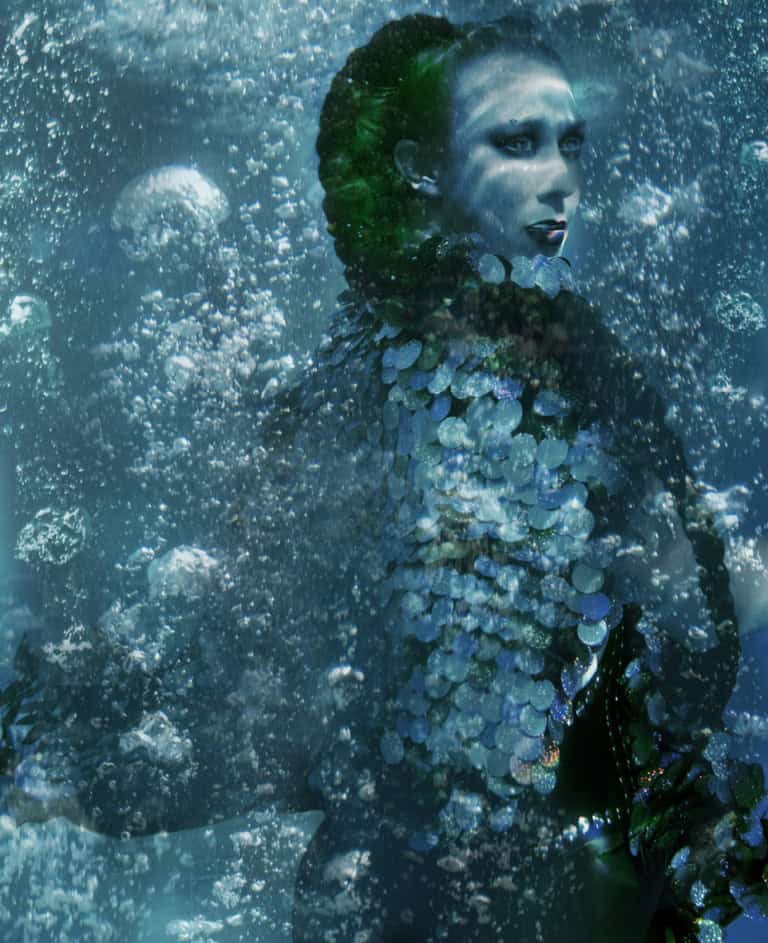
Circular Economy & Fashion go Together Hand in Glove

If you are like me you have been inundated in the past few years with terms that are meant to show the willingness or viability of products and behaviors to help with the manmade aspects of the climate crisis. So many “causes” or foundations or charities that have been set up by companies or individuals, all claiming to be doing their best to change the way things are done so that we can reverse the environmental impact of the industrial age that is the “evil of all evils” when it comes to issues causing the “Greenhouse effect”. We have heard that it is the “Capitalist” global economy that is the engine burning the limited resources of “Mother Earth” and causing mass extinctions, oceanic devastation and Global Warming! We have heard it is all single use plastics fault. You have heard it is all the fault of fossil fuel electricity generation, and my personal favorite, it’s methane from cattle killing the world.
We have seen token efforts by various governments in the form of things like emissions standards. Politicians, like companies, “greenwashing” agenda’s to be able to appease the concerned masses. We have also seen all of the counter arguments, climate change denial, manmade climate change denial, as well as the holes poked in every possible solution in order to keep the status quo. All of these things in turn brought about another, “new”, idea, of “The great reset”. The world economic leaders have just met in Switzerland at the world economic forum to discuss what this actually means. It seems they set forth a catchy title without knowing what the book might contain. It’s confusing. It is frustrating. It is the mis/information age at its finest, or its worst, depending on how you want to look at it.
Let’s try to start off with some very basic facts that need to be understood as facts before we can move on to problems and solutions. One cannot move on to second year math without having first come to the understanding of what numbers are and what they represent, so establishing a baseline of knowns is the first step we are going to take as well.
- We have one world.
- All known human life exists on this world and we call it Earth.
- Between 7 and 4 thousand years ago the first modern human civilizations began, with writing and information sharing.
- 5000 years ago the human population was between 5-20 million
- Current human population is 7.7 billion
- There is geological evidence of previous mass extinction events.
- There have been previous ice ages and we are currently technically in one.
- The speed that we are moving out of this ice age is being dramatically increased by human involvement.
- There are no magic pills, silver bullets, or one shot solutions.
Now that we have these basic facts established, those bare minimums of what we must all agree are the case, we can begin to look at what we might be able to do in order to protect ourselves, our planet, and to prepare the brightest future possible.
This is where our topic really comes into play, Regenerative Economy, also referred to as a Circular Economy. The basic principle is to create an economic framework based upon only renewable resources that can be sustained indefinitely. That is a pretty simple way of putting it and there are a lot of you shaking your heads and thinking, that it’s just not possible, but let’s give it a chance shall we?
We need to look at each aspect of our global economy as it is currently. Identify what is working on these regenerative principles currently and all the things that are not. Then we need to take a holistic approach to implementing solutions that are currently available. It must be a holistic approach, as we know from our facts section, there are no magic pills, no silver bullets, no single solution that can solve all of the problems. A lot needs to change to fix the things we can.
First up are the biggest contributors to manmade climate change. The ones responsible for ecological devastation bringing about loss in bio diversity that will eventually lead to manmade mass extinction not only of many plants, animal and insects but also ourselves.
Fossil fuel energy production is the number one culprit in this as it is 0% regenerative and adds to the greenhouse gasses as well as degradation of ecosystems in procurement and transport. You can break this category down in many different ways but we are not doing that as we like looking at the whole picture and finding holistic approaches to problems. This sector makes up between 30-40% of CO2 emissions world wide.
Transportation, which uses much of the fossil fuel energy in the form of direct fuel burning in order to deliver us and our goods around the world.
Building construction, the largest pollution industry. It requires either the destruction of nature or the destruction of other buildings most of which ends up in landfills.
Fashion, oh fashion our dear friend, the second most polluting industry. It comes from the source all the way to the consumer on this one. The materials used can be cheap oil based textiles to water intensive crops. The non-organic crops often pollute in pesticides and herbicides as well as industrial fertilizer. Then it goes to processing and dyes both of which are more often than not toxic to our water and soil. That does not even get into the energy needs to produce the fabric or the actual clothing, shoes and accessories.
Those are sort of the tip of the iceberg but lets us understand that a huge shift must be made in order to tackle all of these issues. A transition to a circular economy or a regenerative economy through the great reset or the green new deal plans is a must for us all. Those terms make it seem like it is a magic bullet that will fix everything but as you will see those are just names for a big, big, idea with many moving parts that all have to come together. Let’s think about nature, in the world, as it has always been.
Do you remember that water cycle picture you had in grade school?
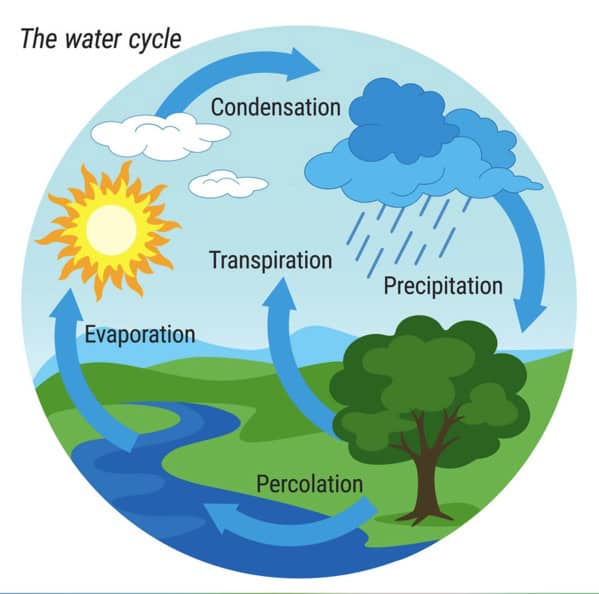
What about photosynthesis?
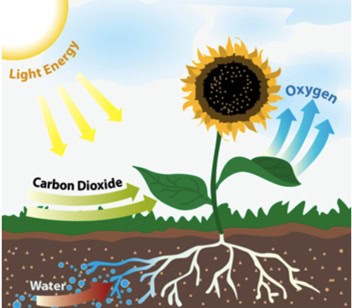
What about the circle of life, as delivered by Mustafa in The Lion King movie from Disney?
(Sorry no photo, its Disney).
All of those examples are of course over simplified but are basically correct. So, what can you find in common about these three very simple nature examples? It is a circular system where nothing is wasted. Each portion is needed to support the next portion of they cycle. We as humans have never been all that good at this but after the industrial revolution we became really bad and very out of sync with the natural way. Though we may just be on a longer loop.
It is, after all, due to all the advancements that the human race has made as a direct result of the the industrial revolution that we have so many of the wonderful and cool things we do! The diseases we have irradicated, the reduction in the percentage of the hungry, our ability to communicate all around the world! Nothing is all bad. I for one certainly would not like to go back and live in a hunter gatherer society. I do want to live in a regenerative way with a circular economy harmonizing with nature.
It starts with us. A concerted effort to use less fossil fuel based everything. As little plastic and oil based textiles, using recycled goods and making sure to do our part in recycling our waste as well. If your town doesn’t compost, I’ll bet a local greenhouse does. Or compost yourself and use it, do so! If you can compost but don’t have the space to use it, sell it! Turn your waste into wealth! Don’t trash your old clothes find ways to repurpose things that are no longer useful as clothing or if your taste has simply changed resale it, swap it, or donate it.
Using the existing is the most efficient way to reduce your carbon footprint. We start the process by doing these things and pushing industries to follow the money and shift the focus away from destroying for profit into regeneration for profit. Buying local as much as possible also helps out your community and the environment.
This behavior shifts the direction of the greed, industry will understand that we will be willing to support regenerative initiatives. Politicians will also take note, and as soon as the industries start paying them to do so, they will set up policy changes to help industries reach these circular economic goals. It’s not just about reducing emissions though, remember there is no silver bullet here. The closest we can come to one is knowing that about 80% of the total environmental impact of a product is determined in the design phase.
That goes for buildings and highways and bike paths, and shoes. Every sector of industry must redesign with zero waste as its goal. That means no more batteries that cannot be recycled, no more built in obsolescence. No more fast, throw away, fashion. Zero waste in all industries is not an attainable goal but it is one worth aspiring towards. I also don’t believe we can or even need to eliminate the use of all non-renewable materials, but we do need to make sure that they are treated as a precious commodity.
Changing the agribusiness model is also a must. It will have a power of three impact if done correctly. Using regenerative farming practices produces more, so requiring less land for the same amount of goods. These same practices also have a carbon capture effect further reducing the green house gasses. Best of all regenerative farming methods produce the most nutritious food, both for ourselves and for the animals we in turn eat. Regenerative farming is also very easily bio-farming removing the need for pesticide and herbicides that pollute our water and soil. That means more insects like bees to pollinate naturally. It is a win all the way around, kiss the ground!
The big one is our energy production. The world population continues to increase meaning we need more of everything than ever before. That means our energy demands also. So how can we keep up with this demand and do it on a regenerative basis when we cannot even keep up with the demand now using the easiest cheapest production methods?
This is where the emerging technologies really come into play! We know there is not a single solution to this problem. We also know that designing sustainable, renewable energy sources that fit each ecosystem is not only the best thing for the environment but long term is the best solution for the economy. There is no longer the need for the large power gird structures or power plants to be created, to meet the needs of the emerging world economies. The technology exist for them to be able to skip that terrible blunder.
Instead, local community grids or personal use energy generation can be implemented. Those of us that live in the parts of the world that have those large power grids and plants be they coal, or nuclear powered generators need to continue to use the existing, while making the shift to renewables based on those ecosystem concerns for each area, until such time that renewable sources are all we require.
The energy sector is a huge portion of the global economy as well, but his will be offset by the new jobs created to implement each sector of energy production. The circular economy, is a true capitalist dream where there is infinite return.
So we have come a long way down the train tracks, now it’s time for us to make a loop and return to the symbiotic living with nature, which includes each other. As I have written this, I cannot help but think about lessons we have had the opportunity to learn through the tragic pandemic crisis that has touched us all in some way. The lessons that we are all connected on this planet.
We are all humans striving to have the best life we can. We all have had to come together to protect not only ourselves but also those around us. Putting those lessons into practice to move our world into a regenerative economy that benefits not only ourselves but all those currently on the planet as well as those to come, should be easier to understand. It is all worth it, doing what you know to be the right thing always is.
To that end let us look at a few of the fashion companies that are already working hand in glove with the regenerative economic model and the innovative technology that is helping these brands achieve these goals.
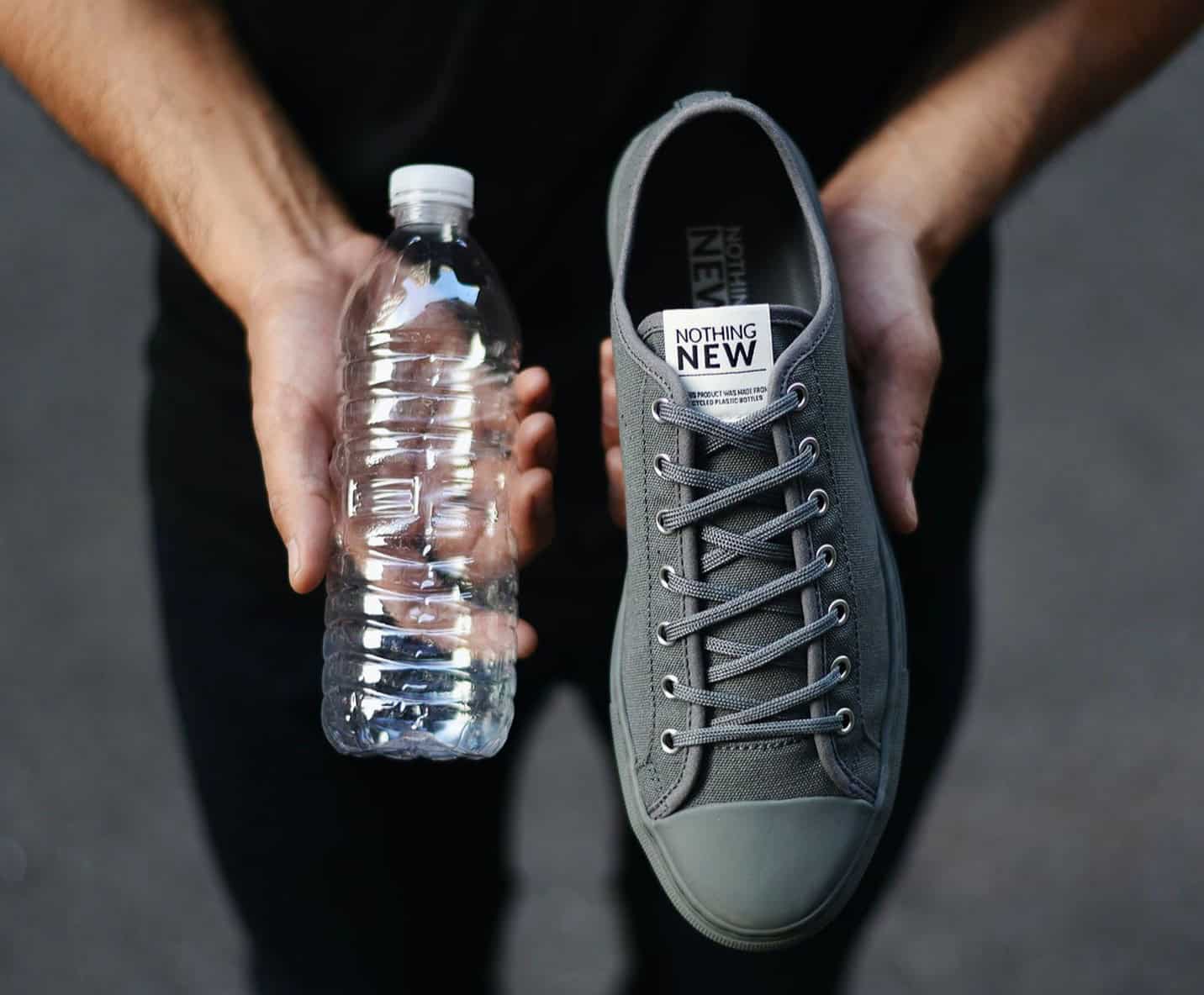
nothing new Except themselves. This is a relatively new company but a fantastic approach to 0% waste. They make “new” footwear out of recycled and up cycled materials.
swap chain This is a fantastic resource to find a place to exchange your pre loved clothing into a new love. Swap before you shop! Using the existing is one of the best things we can do in order to decrease our carbon footprint.
vestiaire collective If you need to shop and cannot swap consider a good resale site and there is non better for the best fashion than Vestiaire Collective.
Etsy Want to keep it easy? Look at the big new player in the resale fashion game.
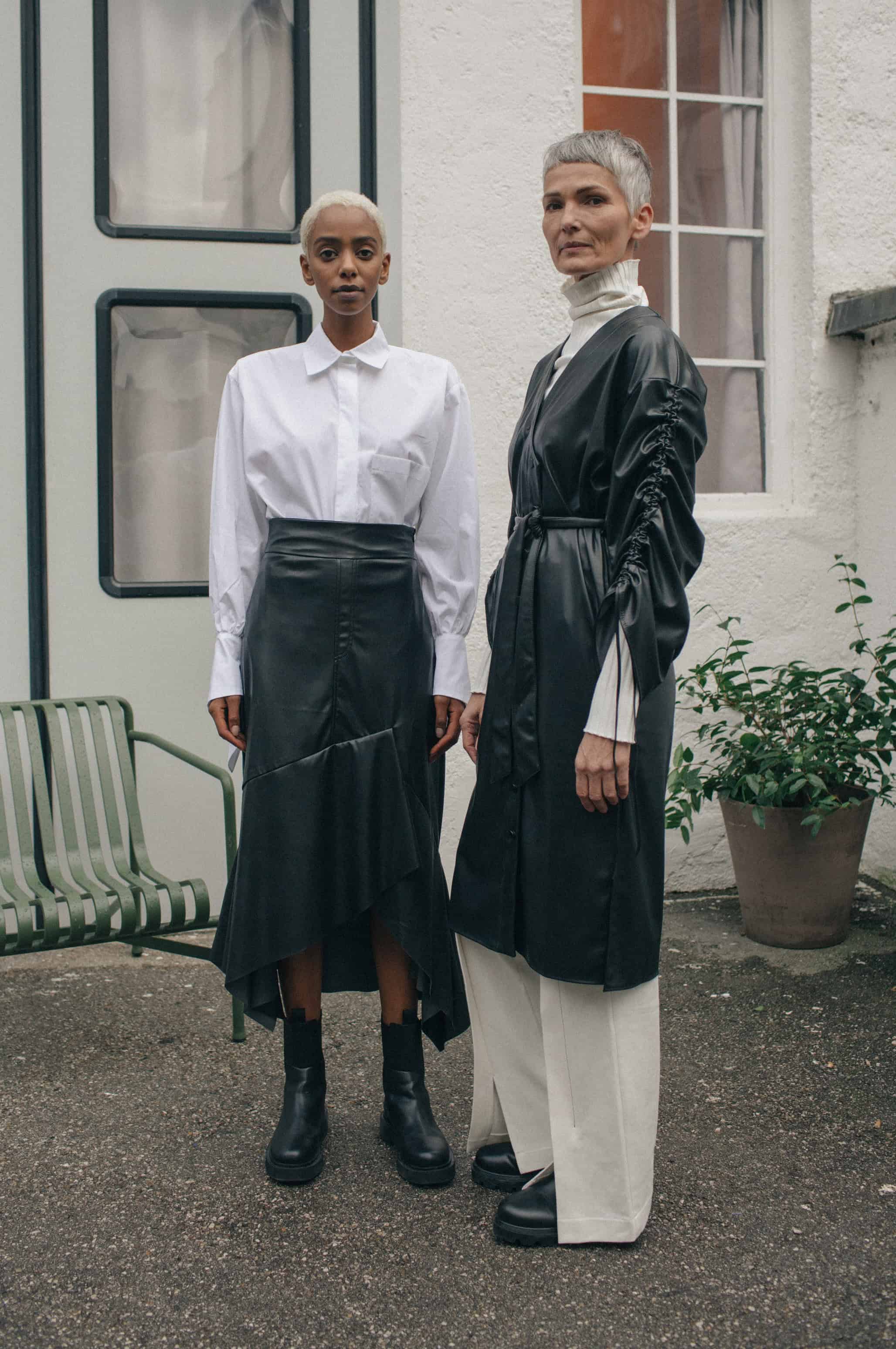
mykke hoffman This is a brand with sustainability built into the DNA. They use the slow fashion approach with less frequent and smaller collections. This pairs with the well researched sustainability of the fabrics used. Either organic or recycled fabrics both are used to beautiful effect. Oh, and they pay their workers higher than industry standards.
Circulose This is one of those amazing 100% circular fabric recycling partners. It is a wonderful process that takes old fashion and remakes new fabric! Brilliant.
yousstex 100% recycled denim plant. That’s right, turning the dirty denim into the circular economy fashion staple it should be. If you have seen brands talk about using only recycled denim, you have yousstex to thank for that.
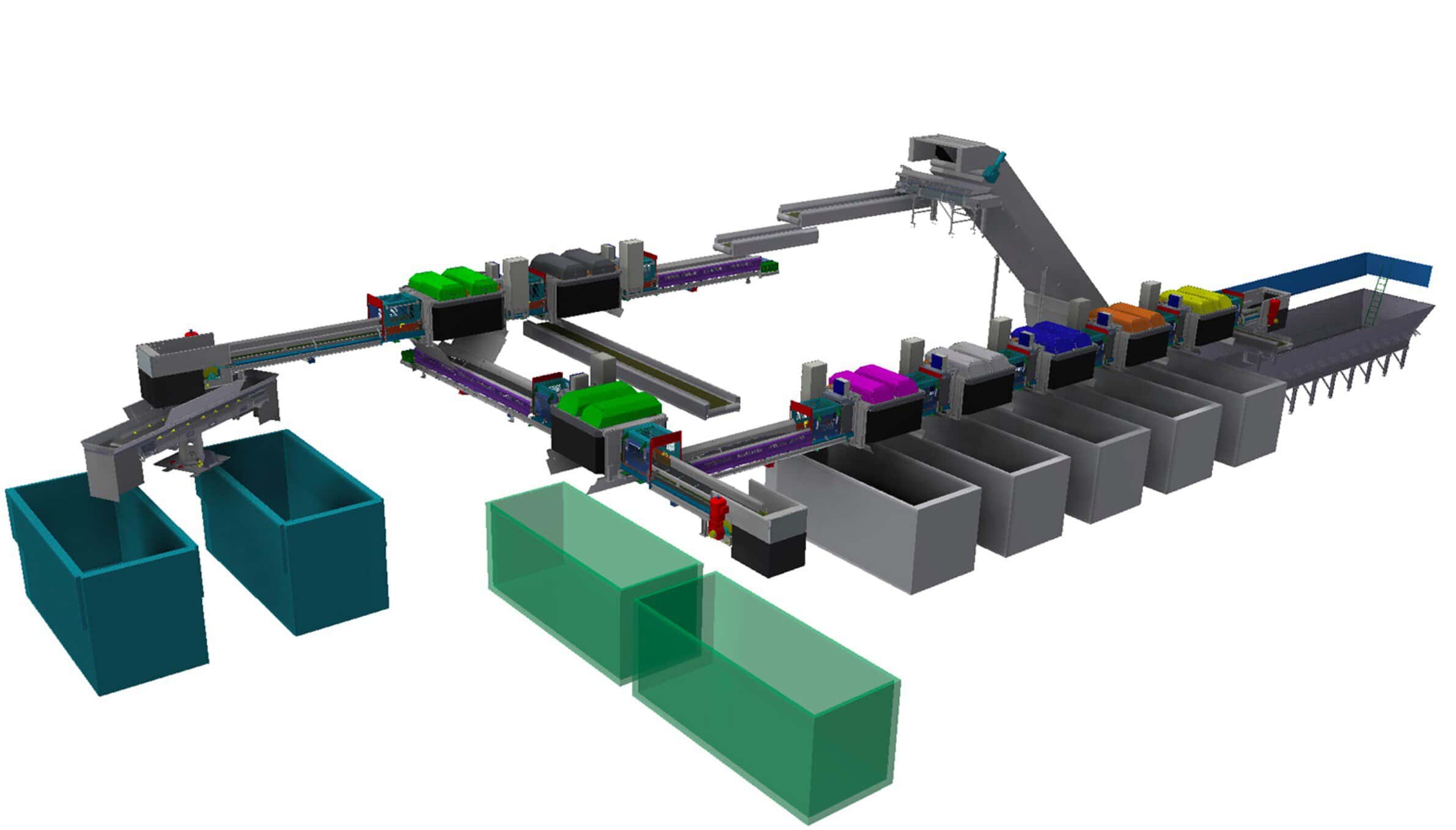
optibag The above image seems like it cannot possibly fit the topic but wait until I tell you what it is! This is one model of the brilliant optical garbage sorting machines that have emptied the Swedish landfills. That’s right emptied them. They sort tons of garbage and separate it to be recycled or reused or turned into electricity. It is this type of innovation that has a proven track record that can be implemented around the world to stop plastic from ever reaching our oceans and textiles that can be recycled into new fashions.

leonorgreyl If you are looking for a beauty product that can work in the circular economy look no further than the all natural Leonor Greyl. They do not promote themselves as anything but a good product and they are right. Cruelty free, all natural and always have been. Perhaps the most remarkable thing is the price is not more than many drugstore brands but they are better for you and the environment.
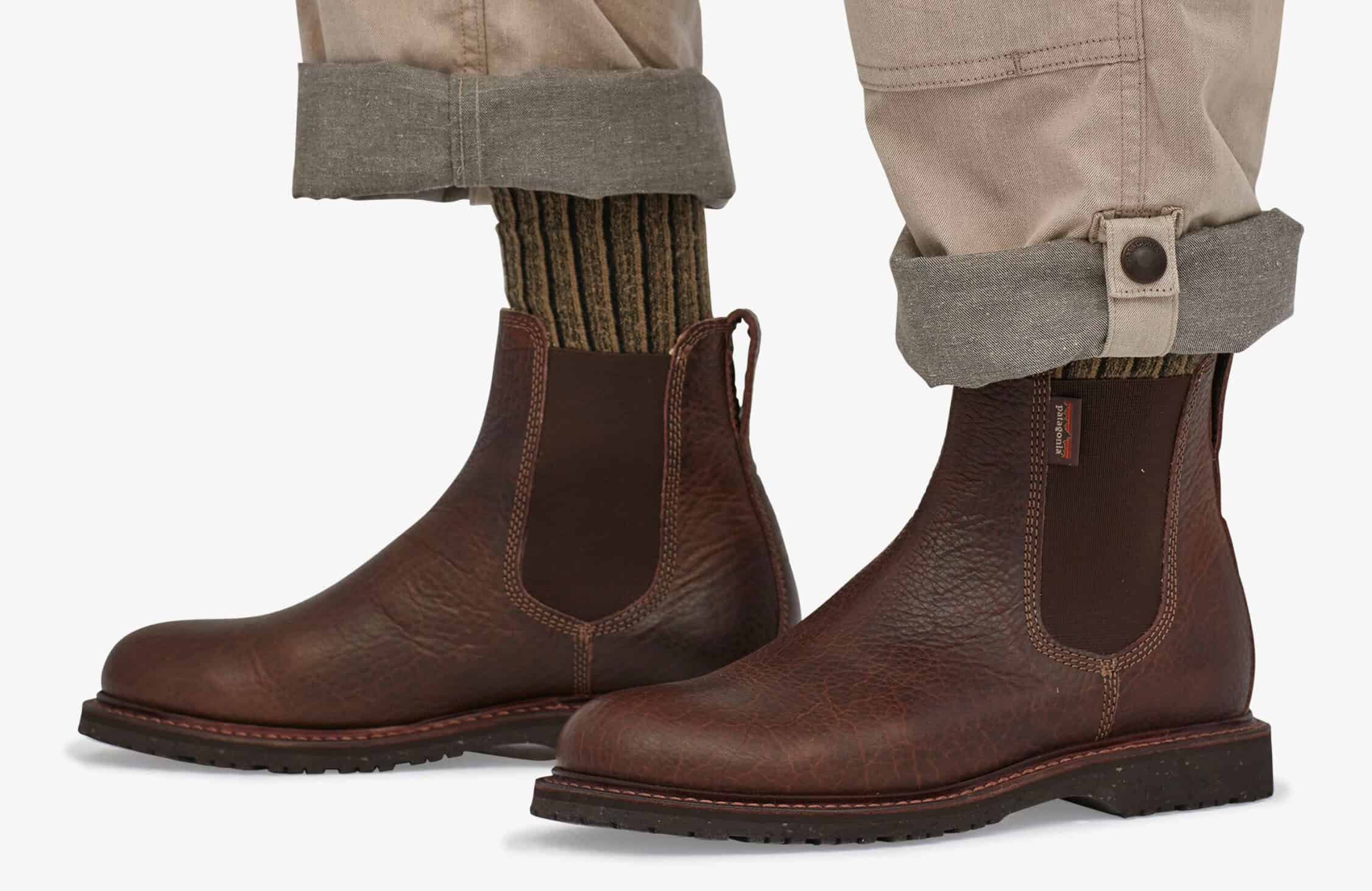
patagonia You cannot speak about sustainability in fashion and not mention Patagonia. They seem to have started the idea of reuse repair and recycle as these principles have always been essential to the brand. They design with materials meant to last and to be repaired. If you are tired of your boots, send them in and they will refurbish and resale them to the next lucky trekker.
stellamccartney Much like Patagonia Stella McCartney has been vocal about moving fashion into the regenerative world. Making fun fashion that is done with a planet positive ethos from design to runway to gala event. Not a new name by any means but one whose once fringe message is now being heard loud and clear.
Further reading to look deeper into the circular economy just click the links below.
Share this post
Donny Lewis, born in Lubbock Tx, is a model, writer, actor and circular fashion activist. He studied history and political science at West Texas A&M before beginning his modeling career and moving to New York City. Soon after he became the face of Guess Jeans.
Since that time he has continued his education visiting 89 countries and becoming the face of numerous other fashion brands such as, Giorgio Armani, Valentino, Stefano Ricci, Cesare Paciotti, Moschino, Roberto Cavali, Levi’s, Luchesse, and Davidoff, just to name a few. Along with his work as the face of fragrance and cosmetic brands such as Mac Cosmetics, Bulgari, Kenneth Cole, Salvatore Ferragamo, Yoji Yamamoto and many others. This front line, “industry insider”, standing has placed him in a unique position to be the liaison between the traditional fashion world and the sustainable fashion world. Leading him to be dubbed, “The Male Face of Sustainable Fashion”. He has felt this responsibility to raise awareness and guide the fashion industry helping brands to create a regenerative circular world, to push for sustainability stemming from the years devoted to the fashion business. It is to that end he founded DVS Fashion which focuses on partnerships with sustainable fashion brands and initiatives. The first partnership giving us DVS Ts, complete end to end, transparent, circular, streetwear with proceeds to benefit The National MS Society as well as The face it Foundation.
Donny’s writing career began even before his modeling having written his first novel, at the age of 14. He then used the fashion industry to travel and gain experience much as Hemingway used wars. Donny has continued to write what he knows in the form of a subsequent novel, numerous short stories, and poems as well as articles for various publications. He has also created and written a streaming platform series, “Oasis Bound”, set in Dubai with the central focus being uniting the cultures of the world under the idea that people are people a lesson he learned in his travels. It also stands as the first NFT tv-series minted on opensea.io
Read Next



